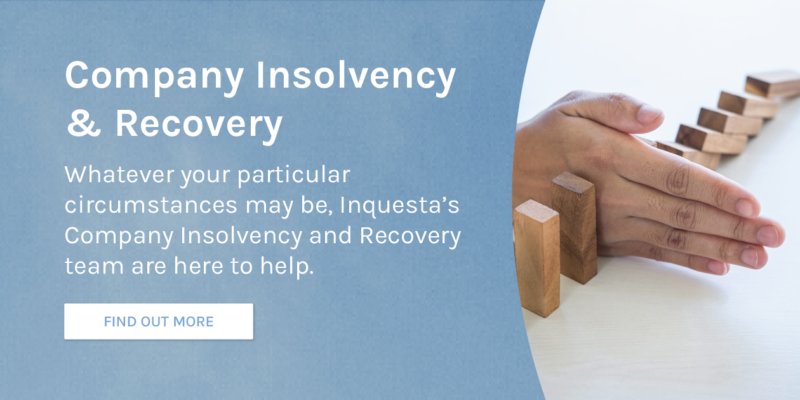If you’re asking yourself, ‘what are the different types of costs in business’, you’re doing the right thing. When it comes to running a company, it’s vital to have a full and all-encompassing understanding of costs — what can be expected, what is important to keep an eye on, etc.
Understanding the various different types of costs in business is pivotal. It ensures that not only are you aware of what you need to look out for, but also helps you better understand how you can manage costs to guarantee that you are operating as efficiently and effectively as possible.
What Are the Different Types of Costs for a Business?
There are a wide variety of different types of costs in business operations. These include fixed costs such as rent or permanent staff wages, variable costs which will likely fluctuate depending on factors like production volume, operating costs to keep the firm running, and direct costs that can be specifically traced back to the production of goods or a service.
Differing types of costs for a business are:
Fixed Costs
Fixed costs are business expenses that are expected to remain consistent regardless of factors like production or company sales. Some of the most common examples of fixed costs include:
- Rent/Lease Payments: Properties that will usually fall under this categorisation are business premises, so office space, stores, manufacturing locations, etc.
- Staff Wages: Any fixed salaries that are not subject to change due to performance or any other factors would be considered fixed costs.
- Utilities: Essential service costs such as electricity, water, gas, and internet, which are all necessary for business, will generally be considered fixed costs.
- Licences and Permits: Any expenses that can be tied to the obtaining or renewing of a licence or permit that is required to to operate is a fixed cost.
- Insurance Premiums: Regular payments made out to insurance providers for coverage would qualify.
- Operating Costs: One of the most prominent fixed costs would be any payment to maintain or repair a business asset, or for a subscription to essential software.
As company director, it’s vital to get to grips with what your fixed costs are, as understanding how much you will need to generate in company income regardless of any extenuating circumstances in order to keep the lights on is key to planning for the future.
Variable Costs
You can expect a variable cost to fluctuate, sometimes wildly, based on the level of production/sales of the business. Variable costs will often not be factored in if sales/production does not take place at all. Examples of variable costs include:
- Material Costs: Any materials purchased to be utilised in the production process would be seen as variable. This is because, if the business booms then production would increase, as would the outgoing cost associated with the raw materials.
- Packaging: Much like the material costs, if production increases, you will be required to also spend more on boxes, labels, etc.
- Shipping and Delivery Fees: Another knock on effect of an increase to production is that you will likely need to spend more on transportation and shipping to your clients/consumers.
- Associated Sales Expenses: Any expenses incurred as a direct result of making a sale, such as concessions, marketing, and associated travel costs, that one can assume would increase in line with additional business, can be seen as a variable cost.
- Some Utilities: While it will often be considered a fixed cost, utility costs that have increased as a direct result of an increase in production could also be classified as a variable cost.
Operating Costs
Operating expenses are any outgoing incurred as a direct result of the day-to-day operations of the business with an eye to maximising the generation of revenue. Some common operating cost examples include:
- Travel Costs: Any expenses incurred due to travel for business would class as operating costs
- Office Supplies: Supplies and equipment needed regularly in the office would count. This can include stationery and papers, ink for printers, or even computers.
- Marketing and Advertising: Any expense with the intention to promote the business or its service, such as an advertising campaign or marketing program, would qualify.
Direct Costs
A direct business costs would be any outgoing specifically related to the production of a project or service. Much like variable costs, direct costs will directly shift as a result of increases to production/sales. Some examples of direct costs are:
- Direct Materials: If your business specialises in the production of oak doors, then the wood, plus any of the additional materials required to create this product, would be classed as a direct material cost.
- Associated Labour: Wages paid out to employees who play a direct hand in the process would be seen as direct labour.
- Packaging Costs: Any packaging specifically tied to a product would also be classed as a direct cost.
- Subcontractor Fees: If, in the act of creating a product or providing a service, a subcontractor is required, then these associated costs would be a direct cost.
How to Manage Costs in a Business
From stepping back and making a thorough plan to track your current and expected expenses, to cutting down on any and all unnecessary spending and managing variables, if you’re a director working out how to manage costs in a business, there are a number of steps you should consider taking.
For additional information on cutting costs, read our dedicated blog.
Tips to work out how to manage costs in a business and help arrest any financial decline include:
Conduct an Audit
Before you plan for your future, it’s imperative that you understand your current position. It’s important that you take a pause and don’t steamroll ahead without consideration.
Identify your costs. Where can you potentially reduce expenses and save some money? How solvent are you? Are there areas of overspending or parts of the company that costs can be cut? Have you considered your firm’s cash flow?
Make a Plan Going Forward
Once you have a clear understanding of where you have been, you will need to decide what you want to do going forward.
You should attempt to come up with some form of road map in order to appropriately forecast your expected expenses. This is particularly important as it allows you to devise some contingency plans should anything go wrong.
Investigate Industry Norms
Wherever possible, it can be worthwhile to investigate your spending against some industry norms. This is excellent to ensure that you are not spending above and beyond what your expected competitors are.
Prioritise and Control Your Costs
You should always make an attempt to differentiate and prioritise your costs. Can you determine which of your current costs are essential to your operation right now and going forward and which are not?
It’s important to ensure that your expenses are effectively and appropriately managed if you are to control your spending. This includes all incoming money, from supply chain costs to your fixed and variable costs.
One of the easiest places to look is at your variable costs. Look at these expenses, what percentage of sales do they actually represent?
Additionally though, while it can be easy to ignore fixed costs due to their recurring nature, you should always be keeping an eye on them to ensure that you aren’t paying over the odds.
Consider Investing Time and Money in Employee Training
An excellent way to cut costs that many may not consider would be in employee training. Well-trained employees will work much more efficiently and much more productively. A small team of highly skilled workers is going to be much more cost-effective than a larger unskilled team.
Consider investing in training and personal development plans for your workers. This will improve performance, while reducing the potential for costly mistakes.
Evaluate Energy Output
As many companies are finding with increasing regularity as bills are rising, energy costs can be significant issues for businesses if left unchecked. If your bills are adding up and escalating out of control, you should consider what more can be done to lower your bills.
Consider implementing energy-efficient practices. This can include equipment designed to save energy, better ventilation, improved and optimised heating equipment, and more.
Inquesta Insolvency, Offering Support for Businesses in Need
As mentioned in our blog, getting to grips with the different types of costs in business are vital if you want to ensure that your business is operating efficiently in both the short-term, and going forward into the future.
As specialists in company insolvency, we have seen what can happen if costs are allowed to spiral out of control and what impact this can have on directors, employees, and the company itself.
By handling this vital aspect of running your firm, you can align your strategies and make better, more informed decisions going forward.
However, if cost-cutting measures are too-little-too-late, you may wish to consider speaking to an expert. Our team of insolvency professionals are trained to offer support for struggling business owners and can make recommendations as to what can be done to stave off the threat of forced closure.
Whether you want information on minimising tax arrears to provide yourself with a bit more breathing space, with coming to an agreement with creditors, or if you need insolvency/liquidation advice, get in touch today. [/fusion_text][/fusion_builder_column][/fusion_builder_row][/fusion_builder_container]




